
I’m excited to share a few of our vacation snaps from a recent trip to Lake Powell today! I’ve never experienced anything quite like it- the lake is like a maze, with little inlets that have canyon walls that tower up on either side, and crystal clear waters with orange sand beaches. These photos don’t do it justice, sadly. It’s one of those places where you just feel so tiny and you’re reminded again how amazing our planet is, how fortunate we are to have places like Lake Powell to explore. Please go for a visit if you ever have the chance, I know you’d love it. Happy trails everyone! xx- Sarah
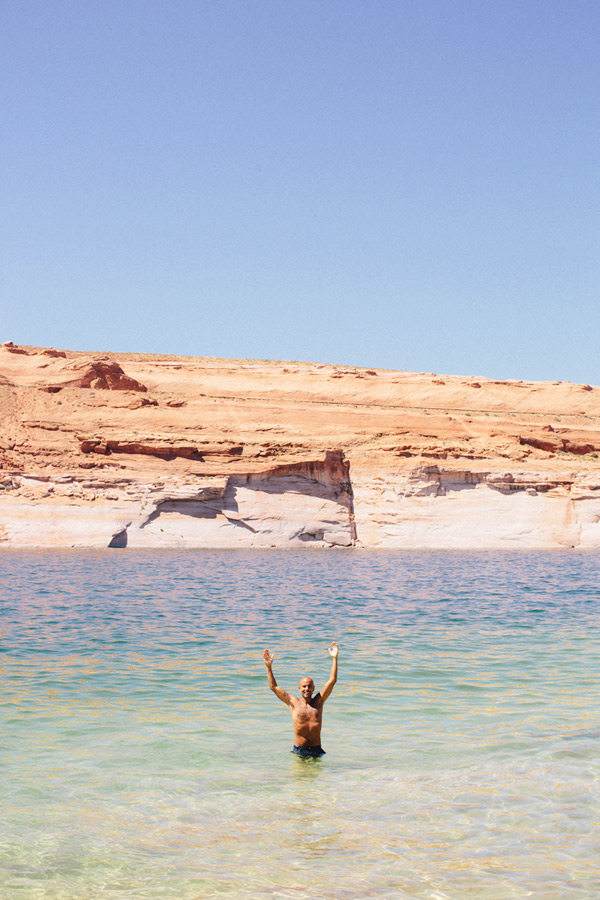

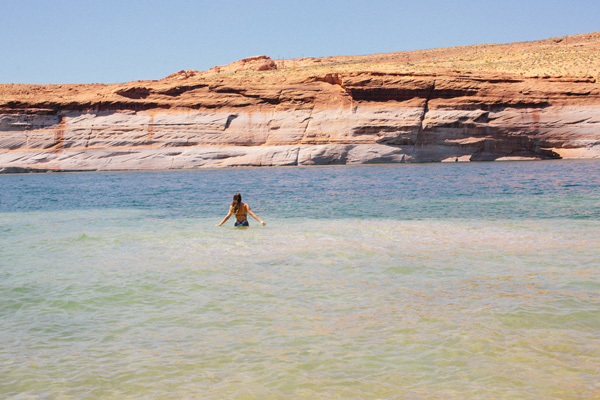

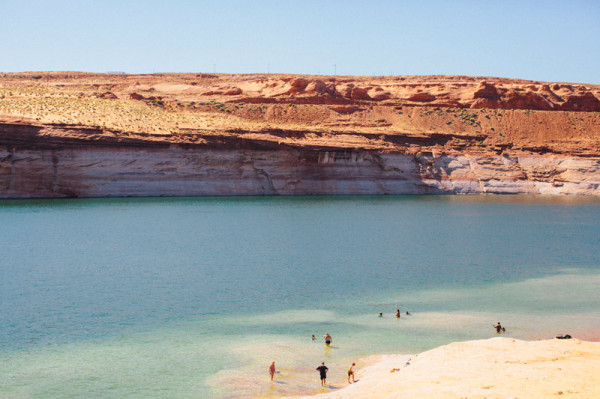
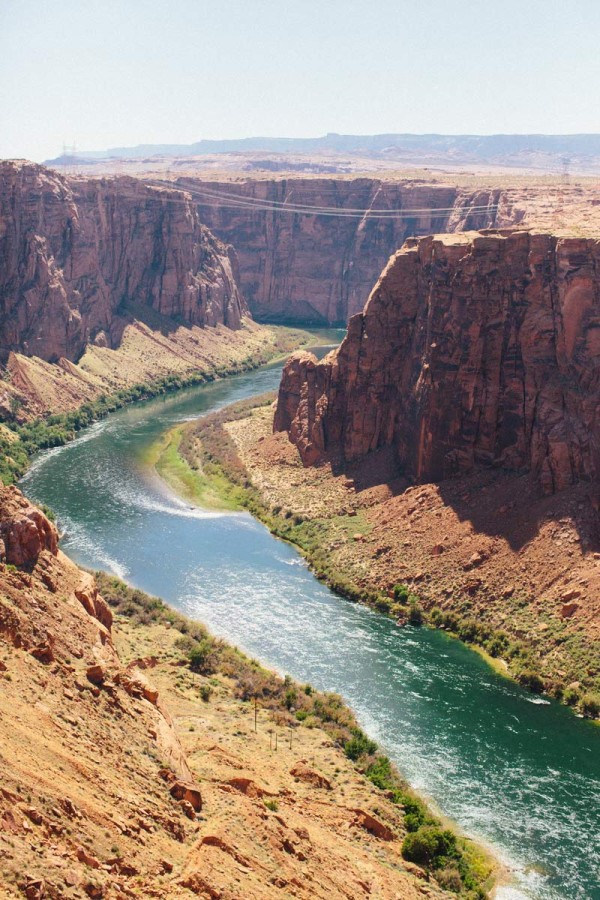
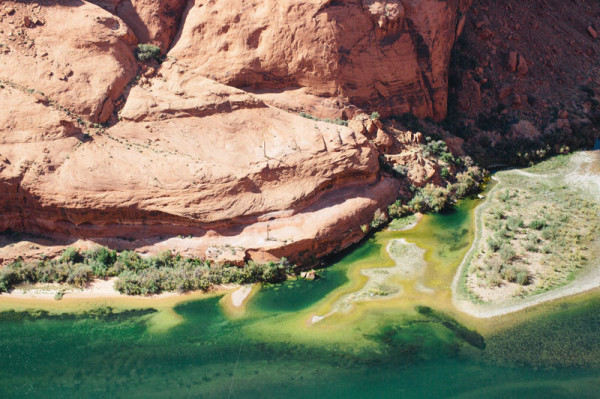

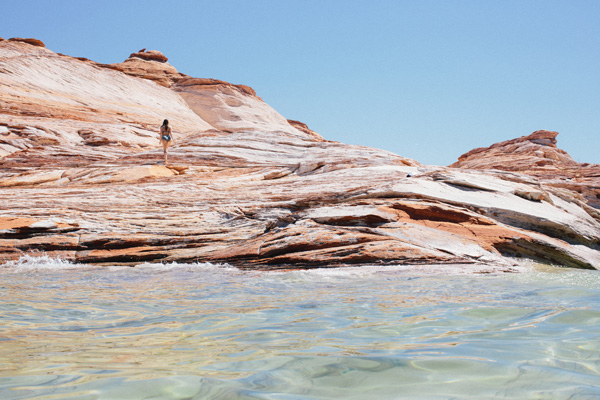
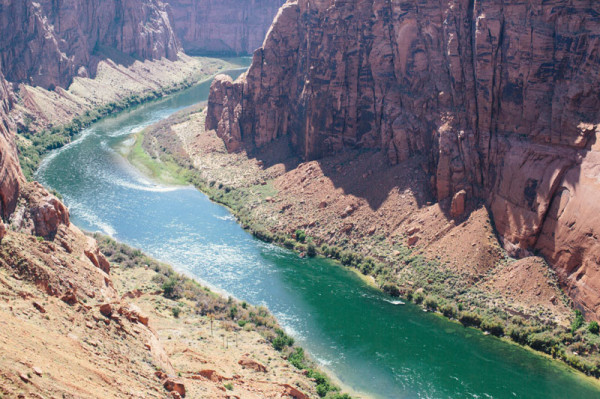

These photos are absolutely stunning – the water looks so inviting!
gorgeous. what a perfect way to enjoy the final days of summer.
One word…wow!
It is absolutely beautiful! Thanks for sharing.
Hi Sarah! Beautiful photos, comme d’habitude! Your blog is so inspiring and quite lovely. Quick question: was the lake water cold?
Beautiful photos! I haven’t been to Lake Powell in years. It’s an amazing place!
Because of its tremendous ecological effect on the Colorado River, the Glen Canyon Dam has inspired heavy controversy from environmentalists. Because of its location in the desert amid porous geology, Lake Powell causes huge evaporation and seepage losses. It is estimated that between 675,000 acre feet (0.833 km3) and 1,000,000 acre feet (1.2 km3), with an average of 860,000 acre feet (1.06 km3), is lost from the reservoir each year. This amounts to 6-8% of the Colorado River’s flow, an increasingly valuable amount of water in an arid land for both humans and the animals and plants that live along the river.[60]
Like all dams, Glen Canyon traps silt, but because the Colorado is an especially high-sediment river, the dam has posed even worse consequences for the river between it and Lake Mead (essentially, the Grand Canyon). About 100 million tons of sediment are trapped behind the dam annually, equal to about 30,000 dump truck loads daily.[61] Because of the dam, sediment deposited by the Colorado and its tributaries is slowly filling up the canyon, and the most optimistic projections put the useful life of the reservoir at 300–700 years. If no action is taken such as dredging, in a few hundred years, sediment deposits will begin to build up at the foot of the dam and will gradually block the different outlets used to release water. If drought intervened in the same period, the reduced storage in the reservoir would have less capacity to maintain the required release of 8.23 million acre feet below the dam. The Colorado below the dam could be reduced to a trickle, damaging habitat and compromising the water supply of the Lower Basin states.[62]
The Colorado through Grand Canyon now lacks the source of sediment it needs to build sandbars and islands, and these natural fluvial formations within the canyon have now suffered severe erosion damage. The floods that once scoured the river yearly are now contained behind the dam except in the worst cases; the elimination of this periodic scouring has promoted vegetation encroachment which not only has considerably changed the riparian zone environment but has created problems for tourism, wherein hikers and rafters often cannot find good spots to camp due to overgrowth. Flow control has also caused an inability of the river to carry away the rockslides that are common along the canyons, leading to the creation of incrementally dangerous rapids that pose a hazard to fish and boaters alike. Before the dam, the Colorado commonly reached flows of more than 90,000 cubic feet per second (2,500 m3/s) during the spring; this has been limited to less than 35,000 cubic feet per second (990 m3/s) most years with few exceptions.[63][64]
Aerial view of the area
Glen Canyon, which Lake Powell flooded, was really more of a narrow and steep sided valley than a canyon and was once described as the “biological heart” of the Colorado because of its abundant riparian growth and streamside habitat on the numerous low river terraces. The canyon once supported 79 plant species, 189 bird species and 34 kinds of mammals.[65] Below the dam, the Colorado has turned into a “death zone for native fish”[66] such as the endangered humpback chub as said by Nikolai Ramsey of the Grand Canyon Trust. Throughout most of the year, water released by Glen Canyon is a consistent 47 °F (8 °C) due to a thermal mass effect in Lake Powell where the water typically released from hundreds of feet below the lake surface through the penstocks is insulated from temperature fluctuations by the thick layer of water above it. Pre-dam, the river ranged from over 80 °F (27 °C) in the heat of summer to just above 32 °F (0 °C) in winter.[67]
In addition to the effect this has on native fish species, biologist and veteran river guide Michael P. Ghiglieri proposed many drowning deaths by boaters in the Grand Canyon Colorado have been caused or exacerbated by rapid hypothermia and hypothermic shock caused by entering the cold water. He further noted during the record post-dam high-flow season of 1983 (mentioned above), there was only one boating fatality in the canyon, providing a strong challenge to views that the dam, by reducing and mediating river flows, increases the safety of canyon river users. The river water temperature in 1983 was significantly higher than normal, due to a large portion of the water having come from overflows of warmer surface water over the spillways of Glen Canyon Dam, rather than the colder lower levels which feed the penstocks.[68]
THE WATER IS SO CLEAR!
I can’t even.
beautiful photos!
Ladies in Navy
Gosh this looks amazing, I’d love to do a road trip of America trouble is at this rate I’d be there for at least a year! Xx
Gorgeous photos!! I’ve never been, but I see it every time I fly into/out of Vegas and I’ve taken so many photos of it from the plane. It looks like such a cool place! I’ll have to go in the near future.
xo Kimi
sooooo lovely. my in laws live in arizona and at some point we WILL make a family trip up there. it’s high on my arizona bucket list, along with antelope canyon.
It look like another planet! Happy Trails.
This is a real place!? It looks like a mirage! Cute bathing suit, too.
nice
http://www.uglytruthofv.com
So glad you shared your trip with us. It looks so beautiful there!!
what a magical place, and the pictures are amazing, as always!
would you recommend to stay anywhere nearby?
Breathtaking!! WOW.
This photos are fun-I love the colors against the river and sky. Fun post!
xx, Heather
Beautiful indeed! I wish we made time in our busy road trip schedule to visit Lake Powell, but sadly we didn’t.
But… we will be back someday and when we’re back, we’re definitely heading to Lake Powell.
Stunning photos, as always!
These pictures are amazing!! What a great backdrop to play in.
http://www.cinnamonstreet.co